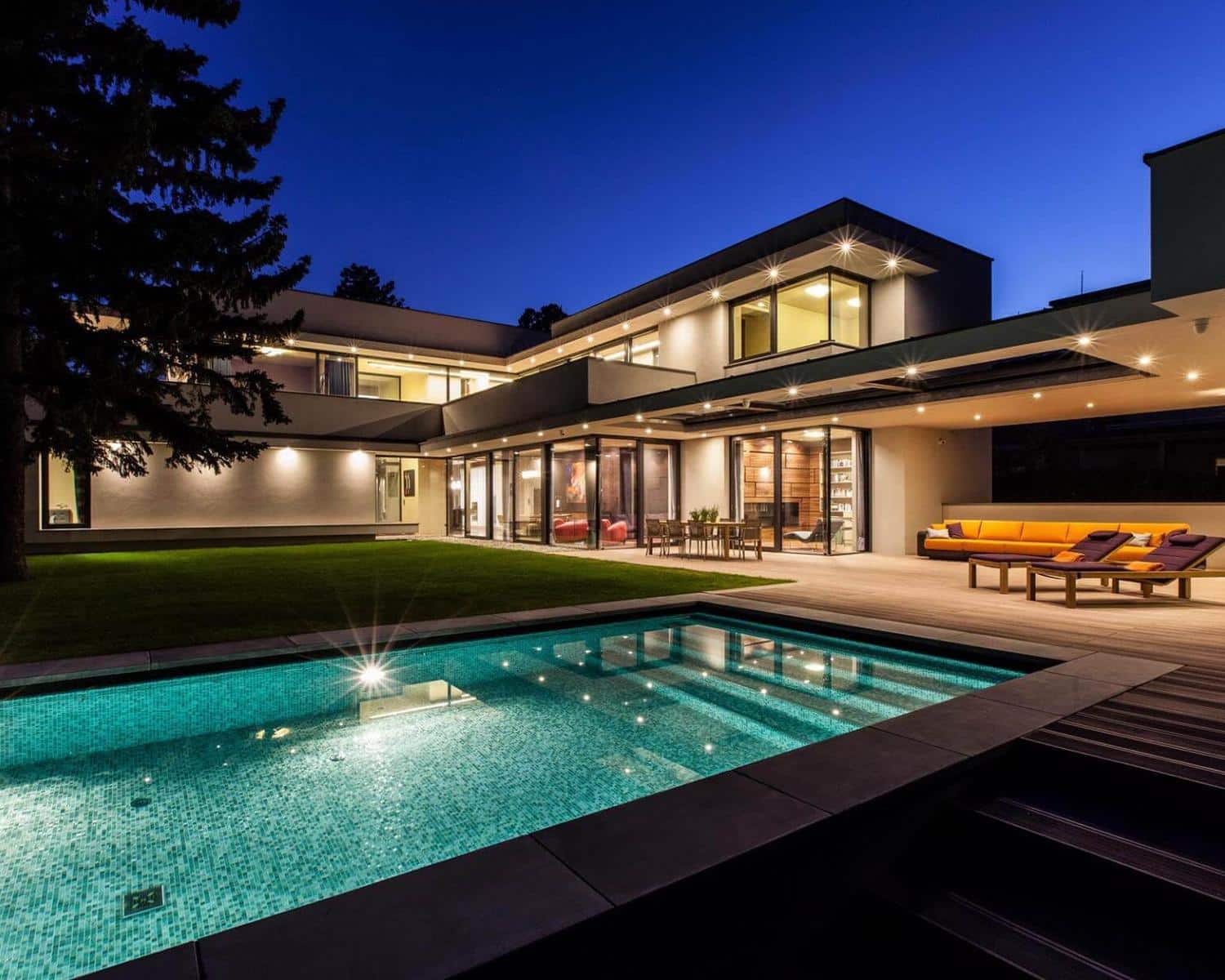For most, property is a long-term investment. Your annual yield determines what you can do with the property and other investments. These tips will help you to improve rental yield.
Why is property a great investment?It’s a question that everybody asks themselves when they’re preparing for their futures. There are so many investment options available. It’s important that you choose something that generates strong returns.Property is the answer for many because of its reliability. Generally, properties increase in value, so you gain when you sell. You can also rent out your investment property to generate a monthly income.That leads to another question. Should I invest for growth or yield when buying a property?In truth, the answer is up to you. Some prefer to buy properties, sit on them for a while, and then sell them. Others may want to build a portfolio of rental properties that generate a stable income.If you’re in the latter camp, rental yields become very important. You’ll want to improve them in any way that you can. These are ten tips for improving rental yields.
Tip #1 – Offer Furniture
It’s important to point out that not all tenants look for furnished properties. Some like to personalise their space, so furniture could put them off.However, furnishing the apartment does open up opportunities in certain market niches. New renters, divorcees, and short-term tenants all want to get into a property fast. The hassle of dealing with furniture is another burden they don’t want to deal with. Your furnished property solves their problems, so you can charge more for it.Furnishing also offers tax depreciation opportunities. Have a Quantity Surveyor list every essential item and create a depreciation schedule. This allows you to claim for each asset’s value throughout its lifespan. Such assets include washing machines, fridges, and even dining tables.If you offer furniture, you improve rental yield and save on your tax bill.
Tip #2 – Raise Your Rents
This seems like the most obvious way to improve rental yield. But it’s surprising how many landlords don’t raise rents when they should.The market plays a huge role in the rent your property commands. When vacancy rates increase, raising rents isn’t a good idea. There’s too much competition out there, so tenants have other options to explore. However, during periods of low vacancy, you have more control over your rents. Raise the prices a little to make a big impact on your yield.Review the market every six months. This gives you an idea of how much competition you face from other landlords. Furthermore, you’ll find out if your current rents align with what everybody else charges. You may find that you’re undercutting yourself when you compare your rents to the competitions’.Finally, remember that each state has rules in place for rent increases. Typically, tenants must receive between 30 and 60 days’ notice before the increase. Check with the state and follow the correct procedures.
Tip #3 – Clean Before Showing
When tenants leave your property, you’re in the perfect position to raise the rent. You don’t have to worry about upsetting the current tenants because they’ve left.However, you do have to justify that increase. New tenants usually view several properties before making their decisions. Assume they’ve done their research and that they know what their money should get them.With that in mind, remember that first impressions count. When you show your property to a prospective tenant, they’ll examine every little detail. A dusty shelf here or dirty skirting board there is all they need to decide that you’re not the landlord for them.Clean the property well before showing it to new tenants. Do the big stuff, like applying a fresh coat of paint and steam-cleaning the carpets. But don’t forget the little things. Get into those pesky corners and get rid of any uncleanliness that detracts from the package.Here’s what this does. It gives the property a fresh feeling that pops out when tenants view it. That justifies the higher rent, meaning you improve rental yield.
Tip #4 – Look for Good Tenants
So, you’ve increased the rent and have a tenant in place. All seems to be going well. Then, your tenant misses their payment for the month. It happens again the next month. Soon, you have to evict them from the building and start your search all over again.The point is that bad tenants don’t improve rental yield. Those missed payments make a big dent in your income. Repeatedly choosing bad tenants who claim they can afford your rent ends up costing you thousands of dollars.Conduct thorough background checks on every prospective tenant. Find out where they’ve lived before and ask for any references from previous landlords.Reliability is key. And remember, it’s better to have a reliable tenant paying slightly less rent than an unreliable one who skips payments. That higher rent doesn’t mean anything if you don’t get it every month. If you’re struggling to attract good tenants, consider lowering your monthly rent. You may find that it produces greater long-term returns.
Tip #5 – Install Solar Panels
There’s no denying that going solar involves a large upfront investment. A 5kW system costs about $4,000, plus a few thousand more in installation fees.How does that help you to improve rental yield?It all comes from the benefits that solar provides. Having a solar power system means that your tenants save hundreds of dollars on their energy bills. You can tap into that saved cash. Increase your rents, with the increase being less than the tenant would have spent each month on energy. About $20 extra per week is a good starting point. That makes $80 extra per month, which translates to an additional $960 per year.In about four years, you’ve paid for the solar panels. A few more years and you’ve paid for the installation costs. After that, the extra money that comes from having a solar panel system goes into your pocket.This is a long-term strategy, so it won’t improve rental yield enough if you’re looking to sell the property soon. However, having solar panels also increases the value of your property. That means they’re a good option for improving capital gain too.
Tip #6 – Allow Pets
Approximately one-third of Australians rent. Over two-thirds of them have pets. However, only 32% of landlords allow pets in their properties. Almost 40% don’t, with the rest not having decided.You’re missing a trick if you’re not part of the 32% of landlords who allow pets in their properties. Pet owners have cried out for more rental options for years, and you’re in a perfect place to provide them.Of course, there are the risks that come with allowing pets. They can cause issues with furnishings and neighbours, for example.However, those with pets will pay more to rent your property than those without. You’ll fill a gap in the market, which will improve rental yield dramatically.You can ask for documentation and certification from vets and training schools too. Most pet owners will happily provide whatever you ask for in return for a pet-friendly rental property.
Tip #7 – Get Help From Past Tenants
You’re not the only one looking for reliability when you rent your property out. Your tenants also want to know that you’ll fulfil your duties as a landlord. After all, no tenant wants to wait months for you to fix basic maintenance issues.That’s where your previous tenants can help. A few references from people who were happy with your work can help dramatically. You’ll show new tenants that they can trust you to do your job. In doing so, you open the door for increasing your rents with each new tenant, thus improving rental yield.
Tip #8 – Maintain Relationships with Current Tenants
Staying on the same theme as the last tip, your relationships with your tenants hold the key to improving rental yield. Unhappy tenants are more likely to kick up a fuss when you raise prices. They may not feel like you’re doing the job properly, so they refuse to pay more. At worst, this leads to vacancies and bad reviews.Maintain your relationships with tenants without getting too close. Communicate regularly through the channels you outline in your agreements. Most importantly, fix maintenance issues when they arise.You’re running a business, so don’t get too close to your tenants. However, don’t distance yourself too much either, else they’ll feel like you don’t care about their needs.
Tip #9 – Blowing Hot and Cold
This has nothing to do with your relationships. Instead, it’s all about the air conditioning and heating systems.Most tenants look for heating and cooling facilities in the properties they rent. Cooling is particularly important given the high temperatures in some Australian regions. If you can’t offer what they’re looking for, you can’t improve rental yield.If your property is in the north or south of the country, having a dual system works wonders for improving rental yield. You cater for the hot and cold seasons. As a result, you can charge an additional $20 or $30 per week.
Tip #10 – Offer Some Storage Space
Everybody needs storage space. A few shelves here and a cupboard there may be all you need to improve rental yield.Creating storage space is also one of the easiest ways to improve your property. Installing shelves takes less than a day, but tenants notice and appreciate them. You could take things further. Consider building a small shed if you have a garden, or installing wardrobes in the bedroom. You could even build a storage area underneath the stairs.There’s plenty of options open to you. Tenants place great value on storage space and will pay more for it.
The Final Word
So, what does it boil down to? Keeping tenants happy, staying on top of the market, and making improvements all help with improving rental yield. So does filling niches that other investors may not have looked at. Allowing pets means you can charge more. Including furniture as part of the package means you appeal to a different segment of the market.These tips can give your annual yield a boost. Choose the ones that work best for your property.

